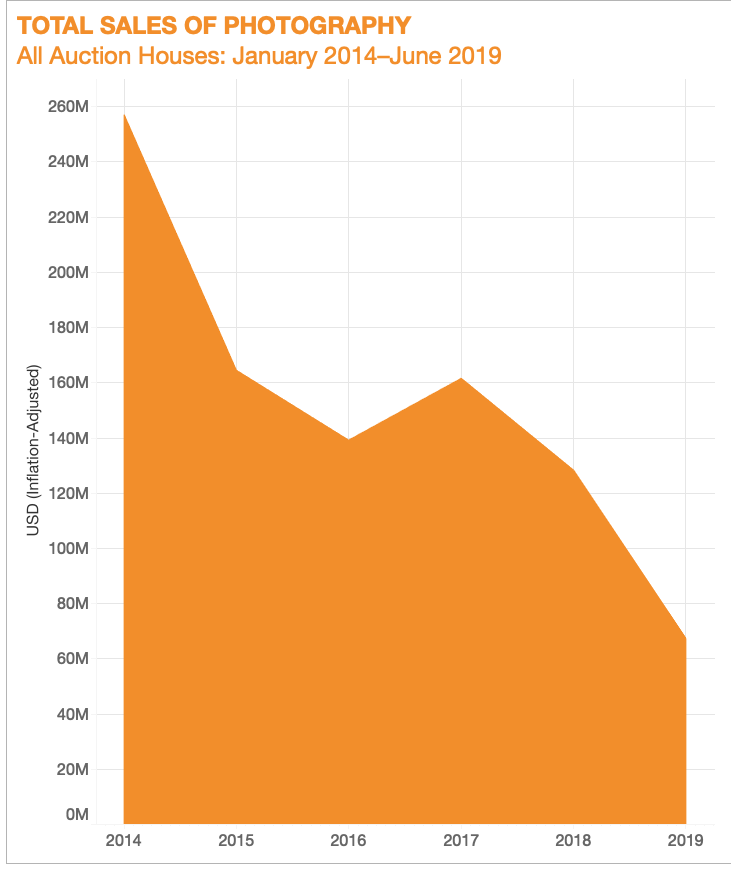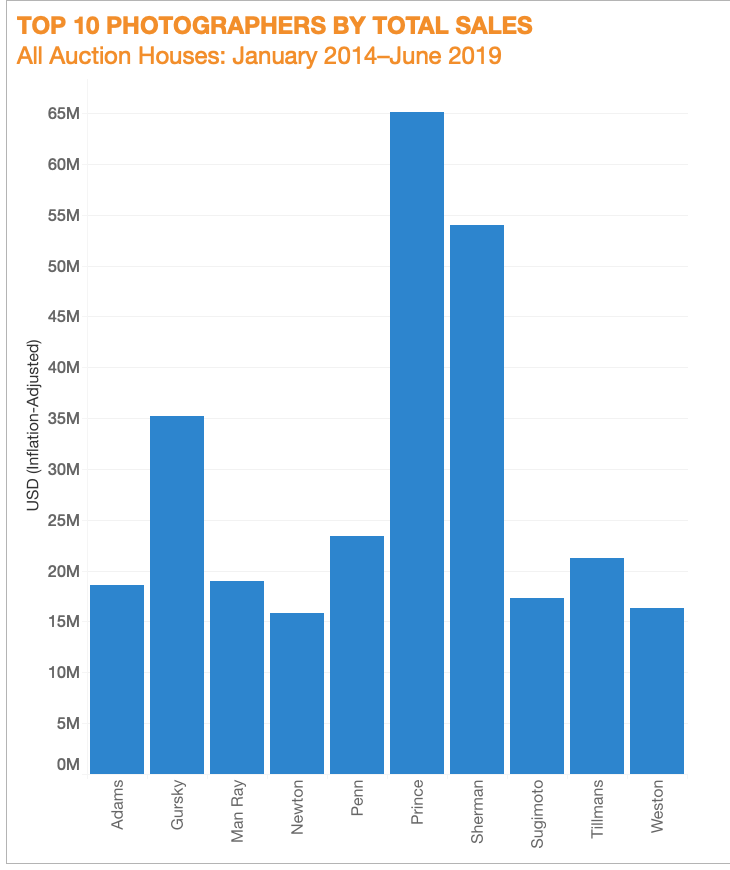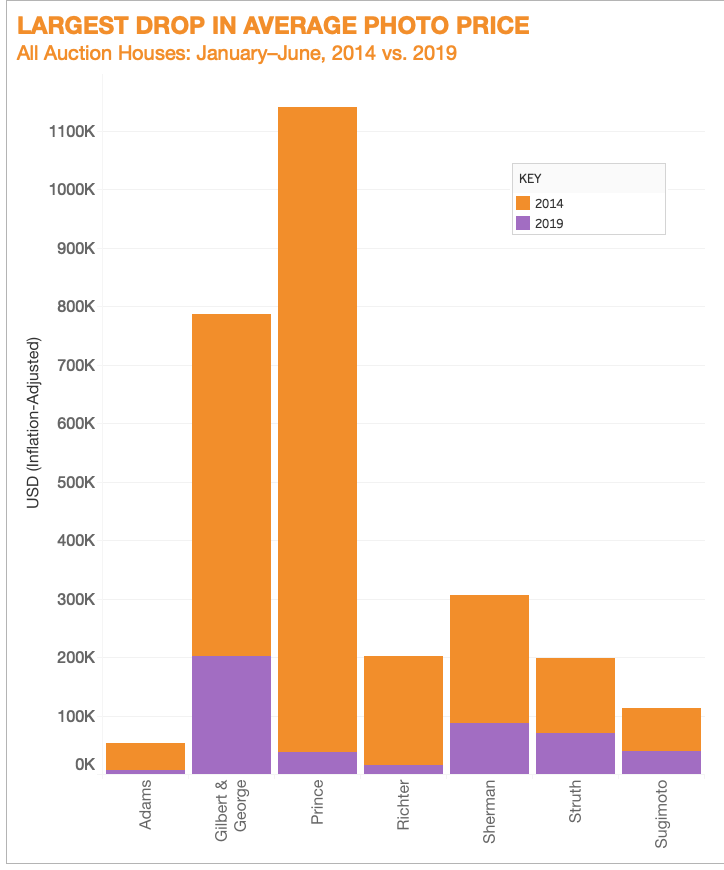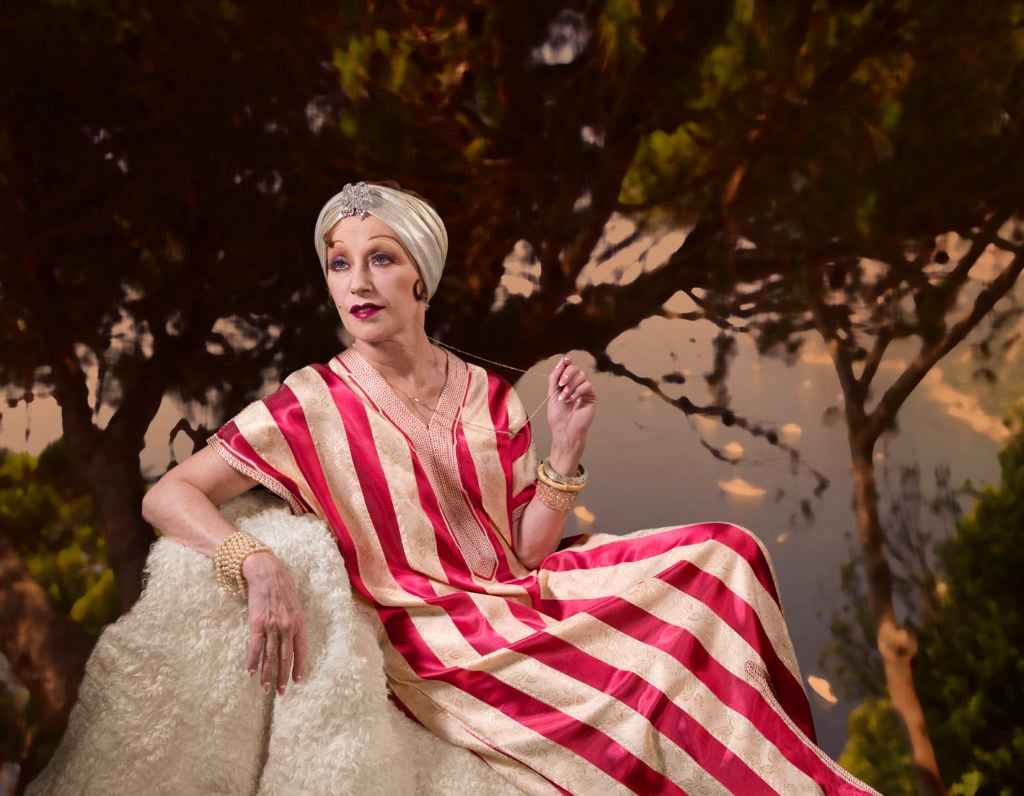Photography’s relationship to the larger art market has been tense from the start. Even today, it’s not terribly difficult to find collectors who regard certain signal names in camerawork, such as Helmut Newton and Irving Penn, as “fashion photographers” rather than fine artists (whatever that latter term means in 2019). Extremism aside, photography also attracts a fair share of buyers and sellers fixated solely on the lens, to the exclusion of other media and the broader art-market ecosystem around them.
And yet, in other ways, photography has never held a more prominent position in the upper echelons of the art business. Nearly every major commercial gallery has added at least one living photographer or photographer’s estate to their program over the past 20 years. As a result, photographs and photo-based art are constant presences in exhibitions and art-fair booths ranging from Art Basel Hong Kong to Frieze London. The medium also supports its own slate of targeted fairs, such as Paris Photo in November and PHOTOFAIRS | Shanghai, which open this week.
These competing elements clarify how difficult it is to talk about a monolithic “photography market,” especially at auction. Photographic works by artists who use a camera only part-time can hammer down in contemporary sales for millions of dollars, while the same houses hold parallel slates of photography-only sales containing works made as far back as the 1840s by artists completely unknown to the mainstream evening-sale crowd.
A look at auction data exposes some of these key tensions. But it also helps identify trends and reveal opportunities for collectors looking to either start or thoughtfully augment a photography collection. The upshot: As the market for the genre has taken a tumble in recent years, now is a good time to pick up photographs by major contemporary stars at a discount. Just don’t wait—the tide is bound to turn soon.
Read on for three takeaways from the past five and a half years of photos at auction, from January 2014 through June 2019.
1. Photography Prices Are the Most Affordable in Recent Memory

Total sales of photographic works at auctions worldwide, January 2014–June 2019. © artnet Price Database 2019.
Over the past five years, the photo market peaked (by both total sales and number of lots sold) in 2014, when the medium brought in just over $257 million at auction worldwide through the sale of around 13,000 works. Those figures translate to an average sale price of about $19,500 per work. (All dollar values have been adjusted for inflation unless otherwise noted.)
After that, the genre’s performance began to dip. By 2018, the market had effectively been cut in half by value, achieving just over $128 million at auction worldwide via roughly 10,400 works sold. Those figures dropped the average sale price to about $14,200.
However, results in the first half of 2019 suggest last year may have been the bottom of the photography market at auction. Sales in the medium totaled about $67.3 million from January through June thanks to 5,685 sold lots. Both of those figures are on pace to slightly surpass their 2018 equivalents. And yet the average price of a photo at auction in the first half of 2019 was just over $11,800—the most affordable in our sample. But it’s reasonable to expect prices to climb if the medium indeed experiences a broader recovery at auction.
That outcome is more plausible than numbers alone might suggest. The major decline in photography sales beginning in 2015 coincided with a major reshuffling of personnel in the photography departments of multiple auction houses. Denise Bethel, Sotheby’s chairman of photography in New York and a 25-year mainstay at the house, departed at the end of 2014. Philippe Garner, the man responsible for holding the first dedicated photography auction in the UK, retired as Christie’s international head of photography in 2016.
It would be a mistake to underestimate the trust vacuum facing potential consignors and bidders in the small world of photography due to those two changes alone. With the unavoidable growing pains of more junior figures stepping into larger roles, or adjusting to new managers, sales were bound to suffer.
But roughly four years beyond that inflection point, it’s reasonable to expect that the new-look photography departments are now rounding into form. That should mean better prints mounting the block, more excitement in the buyer pool, and fatter sales figures are on the horizon.
2. Contemporary Works Have Been Dominating the Market

Top 10 artists by photography sales at auction, January 2014–June 2019. © artnet Price Database 2019.
The list of best-selling artists in photography from 2014 through June 2019 reveals how important contemporary talents have become to this sector in recent years. Half of the top 10 by total sales were born in 1945 or later, qualifying them as contemporary in artnet’s system.
These results crystallize the aforementioned complications between contemporary art and a more purist definition of photography. First-ranked Richard Prince, who brought over $65 million at auction for his photos during this period, also works in painting and sculpture. And a collector is much more likely to find photos by second-ranked Cindy Sherman ($54 million in sales) or fifth-ranked Wolfgang Tillmans ($21.2 million) in a contemporary evening or day sale than a narrowly defined photography sale. Many, if not most, private dealers specializing in photographs do not interact with these artists’ output on the secondary market, and may not even consider them photographers per se.
In fact, contemporary artists make up the largest portion of the top 20 best-selling photographers in the past five-and-a-half years, with the expanded list including names like Gilbert & George (#12), Thomas Struth (#13), and Vik Muniz (#14). Together, the nine artists accumulated roughly $250.5 million in sales from January 2014 through June 2019. For perspective, that haul accounted for over 27 percent of all photography sales at auction over the same period. It also eclipsed the annual sales achieved in the medium every year after 2014.
If we were to narrow the dataset to photography sales only (as I did in a post this April), we would come away with a starkly different impression of who has been up and who has been down since 2014. But even without making such a fundamental change, other metrics can provide a valuable view of soft spots in the auction market for camerawork.
3. …But Photos by Contemporary Stars Are Also Available at a Deep Discount at Auction

Largest drop in average photo price at auction among top-selling photographers between the first halves of 2014 and 2019. © artnet Price Database 2019.
Given how robust sales have been for contemporary artists wielding cameras since 2014, it likely comes as a shock to learn that most of the top sellers fitting this description have performed worse on average at auction in the first six months of 2019 than the equivalent period five years ago. But that is the case—and even more shocking is just how much worse they’ve performed.
Seven of the top 20 best-selling photographers saw their average price plummet by more than 45 percent this year, and five of those seven are contemporary artists. This cohort is led by Richard Prince (down 97 percent), Gilbert & George (down 66 percent), and Cindy Sherman (down 60 percent). The average sales price for Gerhard Richter’s photography, meanwhile, dove by 91 percent.
In fact, only seven of the top 20 artists by photo sales saw their work change hands at a higher average sales price in the first half of 2019 than in the first half of 2014. With the lone exception of contemporary star Wolfgang Tillmans, the risers consist entirely of “pure” photographers from the postwar era: Helmut Newton, Richard Avedon, Diane Arbus, Peter Beard, Irving Penn, and Robert Frank. (Modernist hero Edward Weston comes close thanks to an average sales price that dropped a mere 10 percent between the two periods.)
The discrepancy in results between these two groups shows two very different markets behaving in opposite ways, even while both do so under the banner of photography. The hard fall in the average price for photos by capital-C contemporary artists does not mean those artists are not selling well in 2019. It may simply mean more of their high-value transactions have moved onto the private market in the past five years, which tracks with major galleries’ increasing interest in camerawork. It does mean, however, that those looking for a bargain in this area might do well to look to the auction market.
Meanwhile, the rise in value for artists closer to the Arbus-Penn axis may reflect the renewed level of trust among die-hard photography collectors and the major auction houses after the aforementioned post-2014 staff exodus. With it, higher quality lots may be mounting the block again, in venues where collectors who favor these artists are predisposed to buy.
In short, the photography market contains multitudes. Prices have never been friendlier overall to buyers at auction recently, and it’s a particularly opportune time to buy photos by contemporary stars under the hammer. That is not necessarily the case for purist-approved postwar photographers, whose auction results move independently of the Princes and Shermans of the world. The question for collectors is: Which side of the photo market are you on?
Methodology:
The data covers all works in the medium of photography offered in all sales around the world from January 1, 2014 through June 30, 2019. This methodology ensures that we captured traditionally higher-dollar and more recently made photographic works sold in, for example, major day and evening sales of contemporary art, not just the works sold in auctions narrowly defined as photography-only. All dollar values include buyers’ premiums and are adjusted for inflation unless otherwise noted.









